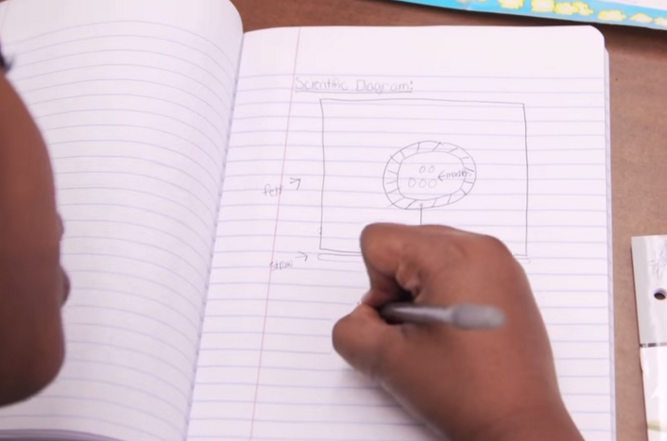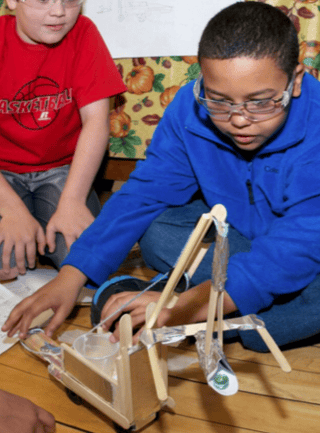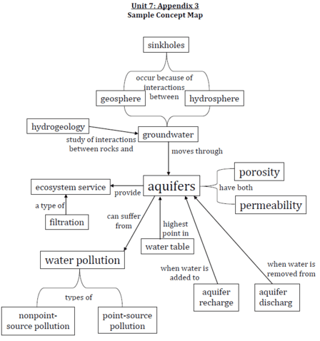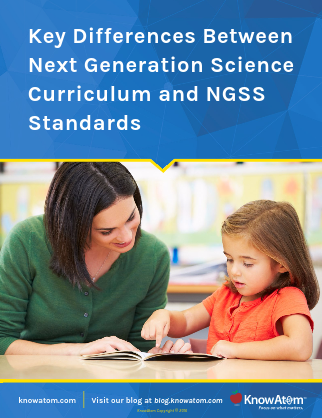One of the challenges for STEM educators in K-8 classrooms is making sure that any STEM task they ask their students to carry out is furthering the mission of effective STEM instruction.
There are 5 things that all truly effective STEM tasks share:
1. Clearly Connected Purpose
First and foremost, there must be clearly connected purpose.
This purpose is driven by the standards. If what you're doing is not clearly connected to the three dimensions of the Next Generation Science Standards-specifically putting students in a position where they have to answer a question or solve a problem-then your curriculum is not effectively teaching STEM concepts or generating scientific inquiry or engineering skills.

This is a grade three worksheet. In this lesson students have ownership over the pieces of the activity, and are participating in the purpose as well. They are clearly connected to the investigation, which comes from the purpose, which in turn comes from the standards and manifests all three dimensions. As the students progress to fourth grade, the same purpose is present but begins to take on more complex forms.
2. 90% Reliance on Students
The second thing to look for in a STEM task is 90-percent reliance on the students. Ideally, that reliance will creep toward 100 percent as you slowly release responsibility until they are creating, evaluating, and analyzing on their own as much as possible.
It’s always important to remember that as teachers, we are coaching and not delivering the content unilaterally.
This begins in the discussion portion of the lesson, with Socratic dialogues that pose high-level questions and encourage student engagement, encouraging complex thinking and problem-solving.
Socratic classrooms use high-level inquiry to put the burden of thinking in students’ laps where it belongs. Answers to questions must consist of more than a yes, no, or maybe: they must also include a rationale for each answer. Teachers may guide the discussion or pose questions, but they put the onus of answering the questions and moving the dialogue/lesson/learning forward on students.
3. Simultaneous Engagement of Students in Three Dimensions
 The third piece to look for in a STEM task is engagement in the three dimensions simultaneously. This means not isolating each concept or skill. When teachers begin to approach lessons by saying, "Okay, we're going to learn this practice now and we're going to learn a different practice later," the spirit of the Next Generation Science Standards is lost. Instead, it's important to engage students in all three dimensions at the same time.
The third piece to look for in a STEM task is engagement in the three dimensions simultaneously. This means not isolating each concept or skill. When teachers begin to approach lessons by saying, "Okay, we're going to learn this practice now and we're going to learn a different practice later," the spirit of the Next Generation Science Standards is lost. Instead, it's important to engage students in all three dimensions at the same time.
If the STEM task is part of a contextualized setting, this won't be a concern because each dimension should naturally arise within the context, revealing different crosscutting concepts, which comprise the relationships between the content.
For example, in this image, students aren't just using isolated concepts or practices. The three dimensions are happening simultaneously. The process engages them on all levels while at the same time relying on them to pull the process forward.
4. A Yearlong Conversation
The fourth facet to look for when evaluating a STEM task is whether it is part of a broader yearlong conversation.
Unfortunately, science education has to a great extent evolved into a world of supplements. As a discipline it has a tendency of becoming a patchwork of a different items or ideas that come from a variety of different sources, none of which actually fit together. As teachers we tend to patch them together and then we try to make them work in the classroom.
The result is a disjointed assortment of scientific concepts and principles, and it doesn't lend itself to a yearlong conversation.
 Instead, STEM tasks should be part of a broader scaffolding, in which the current task builds on previous concepts and important vocabulary, slowly building a big picture of science and engineering over time.
Instead, STEM tasks should be part of a broader scaffolding, in which the current task builds on previous concepts and important vocabulary, slowly building a big picture of science and engineering over time.
As the year progresses, concepts from previous tasks should arise and connect to one another, becoming part of the web of ideas rather than existing in isolation. These logical connections can then be made and strengthened by thinking, discussing, and practicing together.
5. Grouped Standards and Concepts
And finally, when evaluating a STEM task, look to see whether it incorporates multiple standards and concepts together.
Standards and the concepts they cover must interact. If you treat them as isolated, not only are your performance numbers on standardized testing going to fall, but students’ grasp of what science and engineering are and their ability to perform the expectations are also going to suffer. Instead, it’s crucial to see each standard, each concept and each dimension as a sum of a larger part.
The ideal task will build from the ground up, using standards to drive purpose at every stage of exploration, discovery, testing, analysis and presentation. Such robust lessons engage more thoroughly and cement concepts and, more importantly, practices in ways that rote tasks never can.
A curriculum that consistently looks to leverage all of these excellent ideals, resting on purposeful standards and rounded out with meaningful curriculum, cannot help but produce better, more knowledgeable, and more skilled future scientists and engineers.


 To learn more about the differences between curriculum and standards in our NGSS conversation, check out KnowAtom's free eBook on the topic here:
To learn more about the differences between curriculum and standards in our NGSS conversation, check out KnowAtom's free eBook on the topic here:


